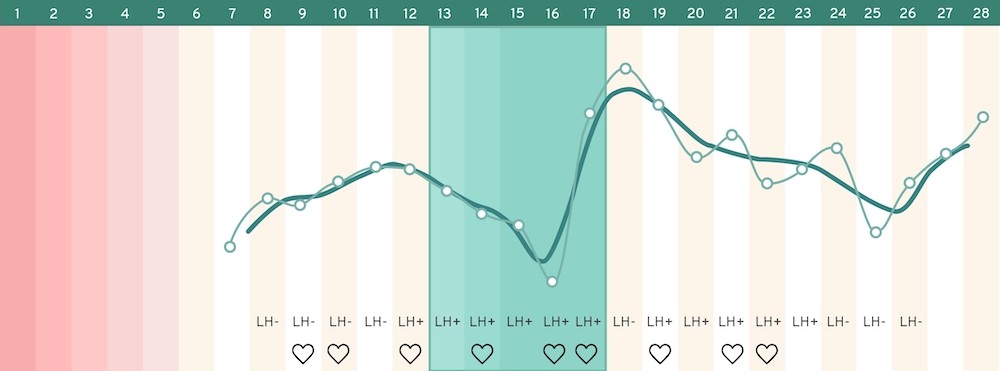Photo by Karolina Grabowska
Many women track their cycles using a fertility awareness method. While the learning process can be tedious, women who track their cervical fluids are privy to knowing when their fertile days of their cycle occur. While a 100 percent accurate ovulation calculator does not exist, if you begin to recognize the clues your cervical mucus is providing, you likely will be able to accurately predict at least part of your fertile window.
What is cervical mucus?
So you hear this trendy buzz word “cervical mucus” and know it is important! But, what is cervical mucus, anyways? Cervical mucus is composed of mucus molecules, protein chains, minerals, and water, produced by the glands of the cervix. This combination forms a unique electrolyte structure that shifts throughout the cycle with the hormonal changes. The 4 main electrolytes, Calcium, Magnesium, Sodium, and Potassium, are present in the cervical fluid. During the follicular phase, Calcium is more abundant while magnesium is less prevalent. This is starting to sound like chemistry class. But, to keep it simple, we will stick with the idea that there are different concentrations of minerals in the cervical fluid!
How to get pregnant fast, thanks to cervical fluid
Score. Now we know that cervical mucus helps show when we are potentially fertile and what it is made up of, so, how does this help me get pregnant?
Cervical mucus and fertility go hand in hand, which is why many women prefer cervical mucus tracking over calendar based prediction methods. Cervical mucus helps you get pregnant in 4 key ways:
While many women want to track ovulation day, it is important to recognize the full fertile window, as limiting your trying to conceive efforts to ovulation day significantly decreases the chance of conception. Five days of fertility each cycle does sound more appealing than 1 day, after all.
- Cervical fluid shifts the pH of the vagina to a more alkaline environment to keep the sperm alive. The vagina is typically quite acidic to help prevent infection. However, sperm require a delicate, alkaline environment, so during the fertile window the cervical fluid helps shift the pH to a more alkaline place!
- The cervical fluid helps the sperm navigate on their journey to the egg. The high water content of the cervical fluid helps the sperm move (should we say swim?) upstream.
- Cervical fluid provides the vital nutrients to sustain sperm. At this point, this is sounding like a bed and breakfast! Without cervical mucus, your trying to conceive efforts will be limited to about 24 hours, or the duration the egg survives if not fertilized. However, thanks to the nourishing qualities of cervical fluid, sperm can be sustained for up to 5 days so sperm can be in waiting before the egg is released.
- The cervical fluid helps filter out atypical sperm, to favor the typical sperm in reaching and fertilizing the egg.
While many women want to track ovulation day, it is important to recognize the full fertile window, as limiting your trying to conceive efforts to ovulation day significantly decreases the chance of conception. Five days of fertility each cycle does sound more appealing than 1 day, after all.
Tracking the Stages of Cervical Mucus
Now that we have established the importance of cervical mucus, you’re probably chomping at the bit to learn how to track it. Tracking your cervical fluid properly often takes about 6 months or longer to learn to do. However, you can start right away by identifying the stages of cervical fluid you’ll likely see during your cycle.
- After the menstrual period ends, typically the cervical mucus is dry and sticky. Some women report that they do not notice any cervical mucus at this time.
- However, this slowly transitions to a more lotiony to creamy type of mucus, increasing both in water content and abundance of mucus. This typically signifies the transition from the infertile period to the fertile window of the cycle.
- As the fertile window progresses, the cervical mucus becomes more wet and slippery in sensation. It may even have the appearance and consistency of raw egg-whites (Have you heard women discuss ECWM? This refers to egg-white cervical mucus). While ovulation and cervical mucus typically go hand in hand, the presence of cervical mucus does not guarantee that ovulation will occur.
- After ovulation, the cervical fluid tends to thicken to help create a barrier to prevent sperm (and any foreign substances) from entering the closed cervix.
What’s the best way to track my cervical mucus?
kegg provides the most convenient method to accurately track your fertility. In only two minutes a day, kegg detects the changes in the cervical fluid, allowing the user to see the full fertile window. Being able to identify the full fertile window, as it opens, and closes, allows the user to optimally time their trying to conceive efforts. Instead of being limited to one or two days as is common with other methods, such as tracking LH, with kegg, the user has 5 full days to time their efforts. kegg detects the cervical mucus from day one. Unlike fertility awareness methods, the user does not have to spend several months learning how to track the cervical fluid. kegg takes the guesswork out of tracking for you!

The kegg chart above (cervical mucus chart) depicts a user’s cycle with kegg. The green window depicts the fertile valley, during which time the readings descend as the cervical fluid becomes more hospitable to sperm, then rises as the fertile window is closing due to the rising estrogen.
